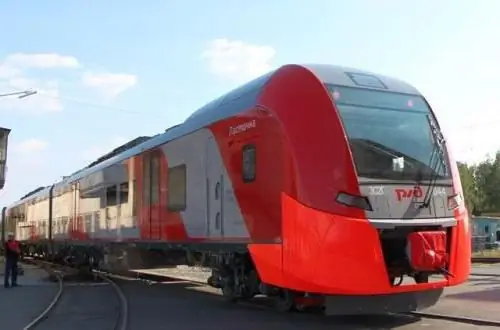- Author Harold Hamphrey [email protected].
- Public 2023-12-17 10:06.
- Last modified 2025-01-24 11:10.

The street that outlines Moscow in the northwest is the Volokolamsk Highway. Branching from Leningradsky Prospekt, it passes through the Sokol and Shchukino districts, passing from Pokrovsky-Streshnevo to Mitino. Going beyond the borders of the capital, Volokolamsk highway leads to the city of the same name.
This is one of the most ancient destinations in the suburbs. The first time it was mentioned in the twelfth century, when Dmitry Dolgoruky decided to build a road to Veliky Novgorod through swamps and impenetrable forests. Volokolamsk, which gave the name to the tract, became the first city that stood in the way of the wayfarers. And later, the only road at that time leading from the capital to the west was called that.
Almost simultaneously with the laying of the first kilometers, the Volokolamsk highway began to be actively developed: first, several peasant farmsteads were built along it, then villages began to appear in their place. The tract was also revived by the railway, laid at the beginning of the twentieth century. Almost at the same time along the road beganthe first country houses were also being built.


Such a trend did not stop after the October uprising, when young proletarians, suffering from entertainment, began to travel by rail on vacation. In the thirties, this "uncivilized" type of recreation was streamlined, and the Volokolamsk highway on both sides began to grow with boarding houses and pioneer camps.
Many interesting buildings were built on this street within the capital. One of them, located at 1 Volokolamsk Highway, is called the "House of Design Institutes". Built in the fifties, this monumental building is one of the brightest and most illustrative examples of the Stalinist Empire style.
The Stroganov Academy and the building of the Food University are a little further away.
Volokolamsk highway is also famous for other interesting objects. For example, in the house at number forty-seven, the Segert mansion, built in 1914, was once located. They say that it was here, according to Bulgakov's plan, that the landmark meeting between Homeless and the Master took place.

At the very beginning of the road, on the even side of Volokolamka, there is the Church of the Most Holy Theotokos and the Neuralgia Institute. And already on the site of Spassko-Tushino, the Cathedral of the Transfiguration of the Savior is majestically located.
When in the mid-nineties people began to develop the lands of the Moscow region, it was the Volokolamsk highway that took the first blow from the so-called point developers. It was explained simply: along the routethere were many towns, small towns and villages, so there were no problems with communications.
Such active development has played a cruel joke on the road, turning it into one of the busiest in the suburbs. The Volokolamsk highway is quite narrow, it cannot be widened, since this would require the demolition of the cottage settlements and villages built on both sides.

In addition, it is famous for a huge number of traffic lights, which is not liked by all motorists. However, there is hope that by 2015 the Volokolamsk Highway will be unloaded. The government of the Moscow Region plans to build a new high-speed toll highway through Krasnogorsk.
The Moscow part of the road was not ignored either. The Committee for Urban Planning and Architecture of the capital on the segment from Leningradsky Prospekt up to the Moscow Ring Road has developed a reconstruction project that involves the organization of ten traffic lanes. Volokolamsk Highway will also increase its capacity thanks to four flyovers under construction.






